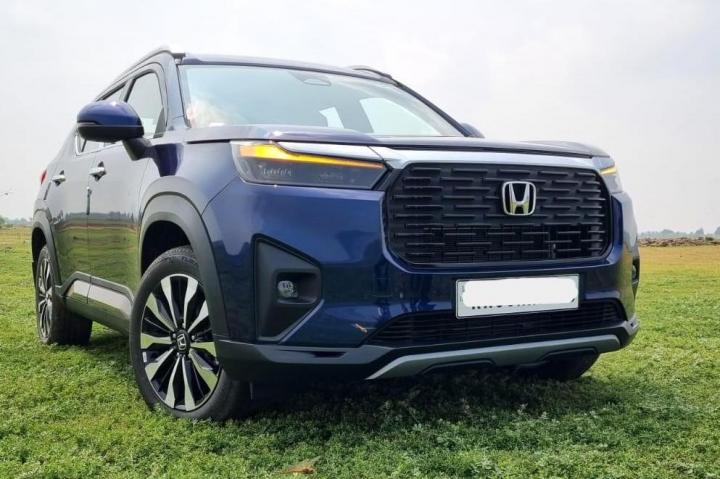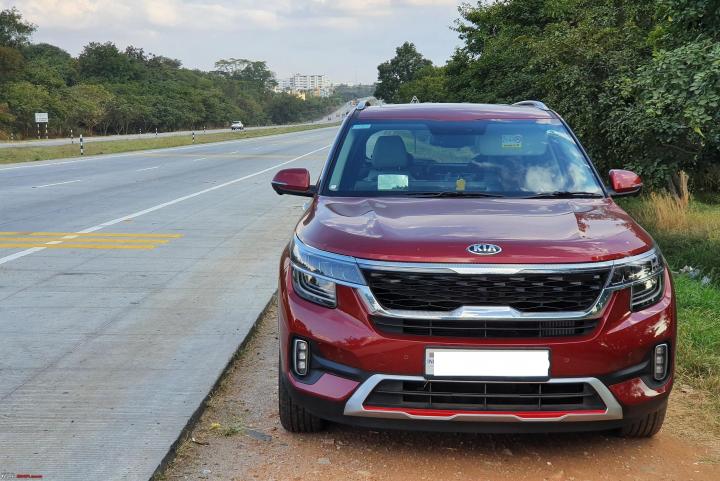News
Owner compares his Elevate and Seltos on 6 aspects including comfort
The Kia Seltos IVT replaced our Ford Ecosport and the Honda Elevate CVT came into our lives in place of Tata Tiago.
BHPian salmanz1992 recently shared this with other enthusiasts.
Introduction
In 2020, we replaced our Ford Ecosport Titanium (D), which had covered 175,000 km over seven years, with the Kia Seltos HTX IVT (P).
In 2024, it was time to replace our six-year-old Tata Tiago, which had clocked over 62,000 km. Our experience with the Tiago led us to decide against purchasing another Tata vehicle, due to unsatisfactory service and engineering issues. After three years with the Seltos, our preference for automatic transmissions grew, particularly enjoying the smoothness of the CVT gearbox.
Options Considered
- Kia Sonet: Our initial choice, given our positive experience with the Seltos and Kia's excellent service. However, we found the interior space of the Sonet lacking, with the rear feeling particularly cramped. The 1.0-liter turbocharged engine had good power but suffered from turbo lag in city driving, and the DCT gearbox was not as smooth at low speeds as the CVT.
- Honda Elevate: We became aware of attractive discounts on the Honda Elevate through the forum. Our local dealership offered a discount of 1 lakh INR on the ex-showroom price, making the Elevate VX CVT comparable in price to the Kia Sonet GTX. The Elevate offered far more car for the money, with a naturally aspirated engine that provided sufficient power from the word go. While the Elevate lacks some features, it includes all the essential ones.
Seltos vs. Elevate Comparison
- Design: Both vehicles are aesthetically pleasing and well-proportioned. The Seltos has a slightly more premium and mature design, with striking LED headlights that still impress after three years. The Elevate has a rugged appearance, with a high bonnet line and additional cladding, though it appears smaller next to the Seltos.
- Build Quality: The Seltos feels more robust, with higher-quality interior materials and a lack of rattles even after three years. The Elevate, on the other hand, features more scratch-prone plastics, and the quality suggests potential rattling over time. The exterior sheet metal of the Seltos also feels of better quality and heavier, though this comment does not reflect on safety.
- Ride and Handling: The Elevate excels in this area, offering a more responsive engine and agile handling compared to the Seltos. The Elevate's suspension provides a better balance of firmness and comfort, resulting in a superior ride quality. However, the Seltos is a better long-distance cruiser due to the presence of cruise control, which is notably absent in the Elevate.
- NVH & Vibrations: The Seltos is significantly quieter, with minimal engine and road noise. In contrast, the Elevate's engine is more audible, and road noise becomes noticeable at 60 km/h, with slight vibrations felt on the pedals throughout the rev range. The better NVH of Seltos adds to its creds of being an effective cruiser.
- Seating Comfort: The Elevate offers easier access for older passengers with its lower floor pan and seat height, though this reduces the SUV feel. The seats in the Elevate are firmer compared to the Seltos, which offers a better balance of comfort and support, particularly in under-thigh support.
- Space: The Seltos feels more spacious inside, while the Elevate feels comparatively tight. However, the Elevate compensates with a significantly larger and better-shaped boot.
Conclusion
While the Seltos offers a more premium feel in terms of both interior and exterior design, the Honda Elevate stands out for its excellent ride and handling characteristics, powered by the sweet i-VTEC engine (ignoring the poor NVH). With the current discounts available, the Elevate presents a highly value-for-money package like no other in the current market.
Check out BHPian comments for more insights and information.








.jpg)



.jpg)









